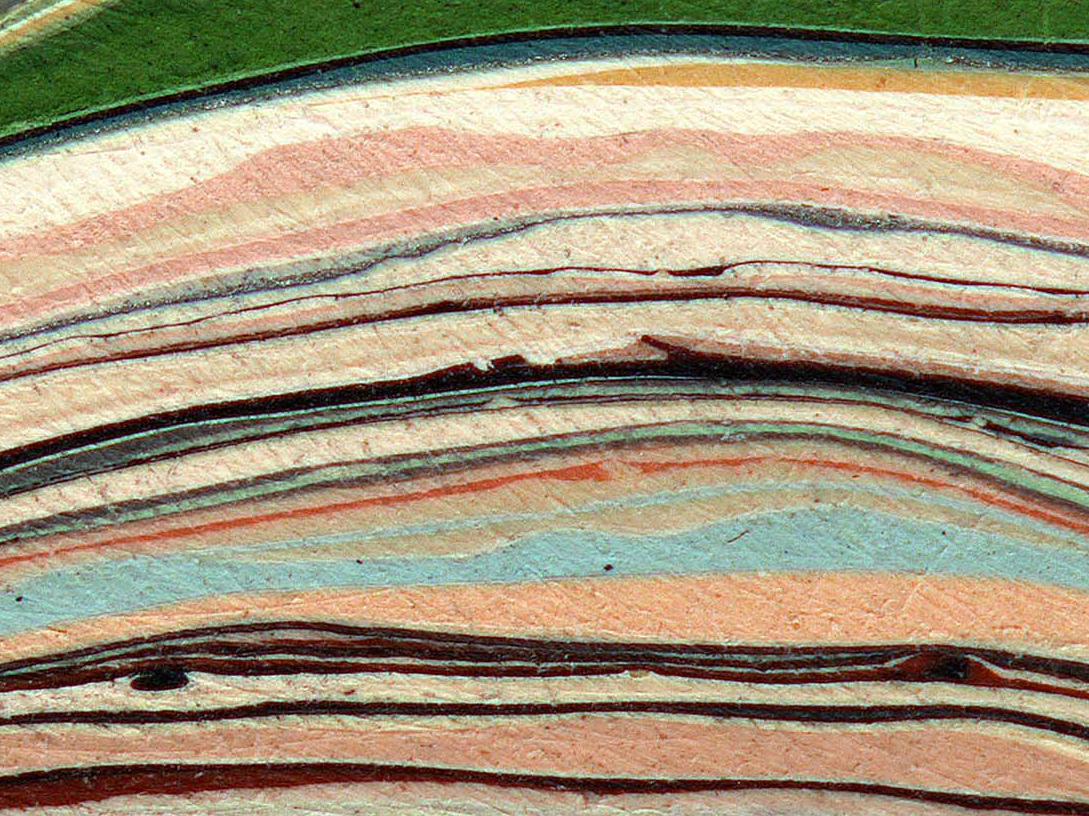
“Dad’s Stick is a lovely tribute to Smith’s father, but it’s also a witty game of form. What seems at first to be a voluptuous abstract painting turns out to be something more mundane, but now mysterious in its accidental beauty.”
David Bordwell1
“Smith has always been fascinated by the competitive relation between language’s denoting an object and an image’s representing it. Dad’s Stick is the latest instalment in a series of works which exploit, for dramatic potential, the ambiguity between these alternative forms of signification. The film’s opening image is a multicoloured field of striated colour which appears, projected onto a gallery wall, to be a large-scale abstract colourfield painting. It is qualified by a line of superimposed text: ‘My Dad did a lot of painting’. We naturally assume that this must mean painting as art, until it becomes clear, at the end of the film, that the colour field was, in fact, a close-up of a cross-section of a paint-encrusted wooden stick that Smith’s father used over many decades to mix household paint before applying it to the walls of his house. Timeless abstraction is exposed as dense with compacted time, like the rings of a tree trunk, while art is exposed as an illusion concealing an artisanal truth. And yet, of course, Dad’s Stick is an art film, and declares itself as such. Its monochrome backgrounds reference modernist painterly abstraction, as its Helvetica captions are a stylistic convention of conceptual art. But this form of allusion is implicitly questioned by the objects in the film – a wooden stick that has become a magic chromatic wand; a cup for mixing paint that is so encrusted it resembles a sea shell. They have become emblems of the resistance of reality to being represented by the images through which Smith is nevertheless revealing them to us.”
Mark Prince2

